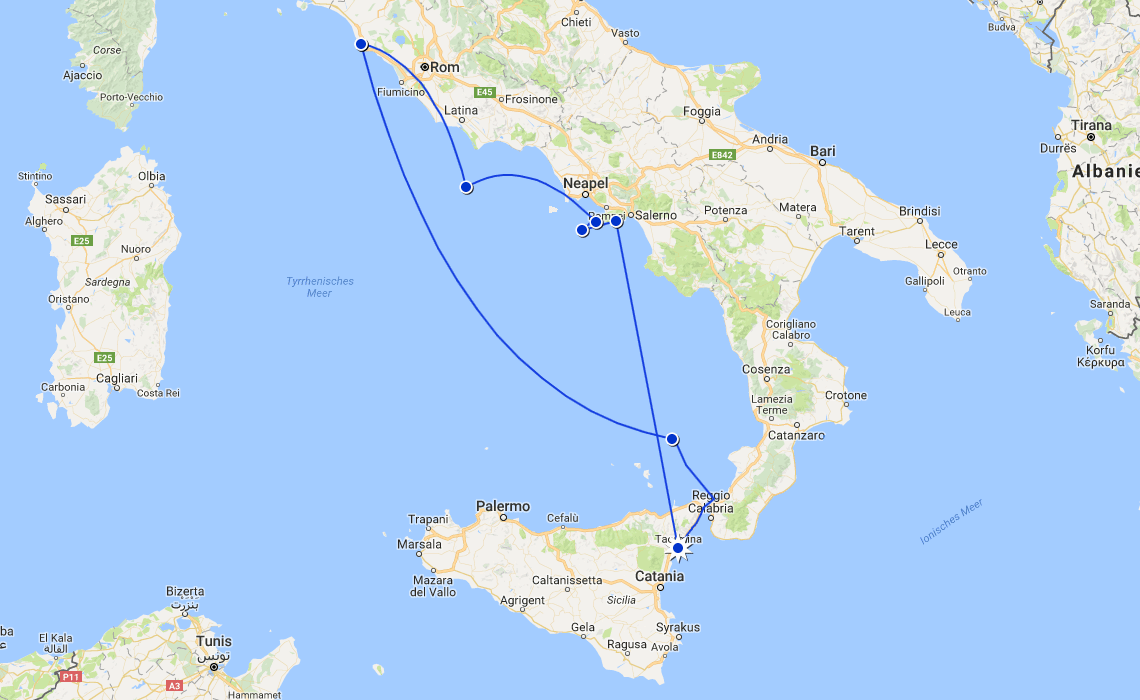

Rome
Just before the cruise started from the port of Civitavecchia (about 90 km from Rome), I spent 2 days in Rome upfront for sightseeing and shopping. You can spent several days just for seightseeing, so I picked a few locations that I wanted to revisit (have been to Rome before).
Among them:
Ponza
Ponza is a 7 km long, crescent-shaped island, 30 km off the Italian coast, and a remnant of a volcano crater. The approximately 3000 inhabitants live on Ponza primarily from fishing and tourism.
Apart from the culinary delights (eating freshly catched fish in one of the many restaurants), the main attraction of Ponza during a short stop surely is a boat trip to the many small grottos with turquois-blue-colored, ultra-clear water that even allows to take extremely detailed snapshots of jellyfish from above the waterline.
Unfortunately I haven't sifted through the over 13,000 photos I took during that journey. More pictures to come...